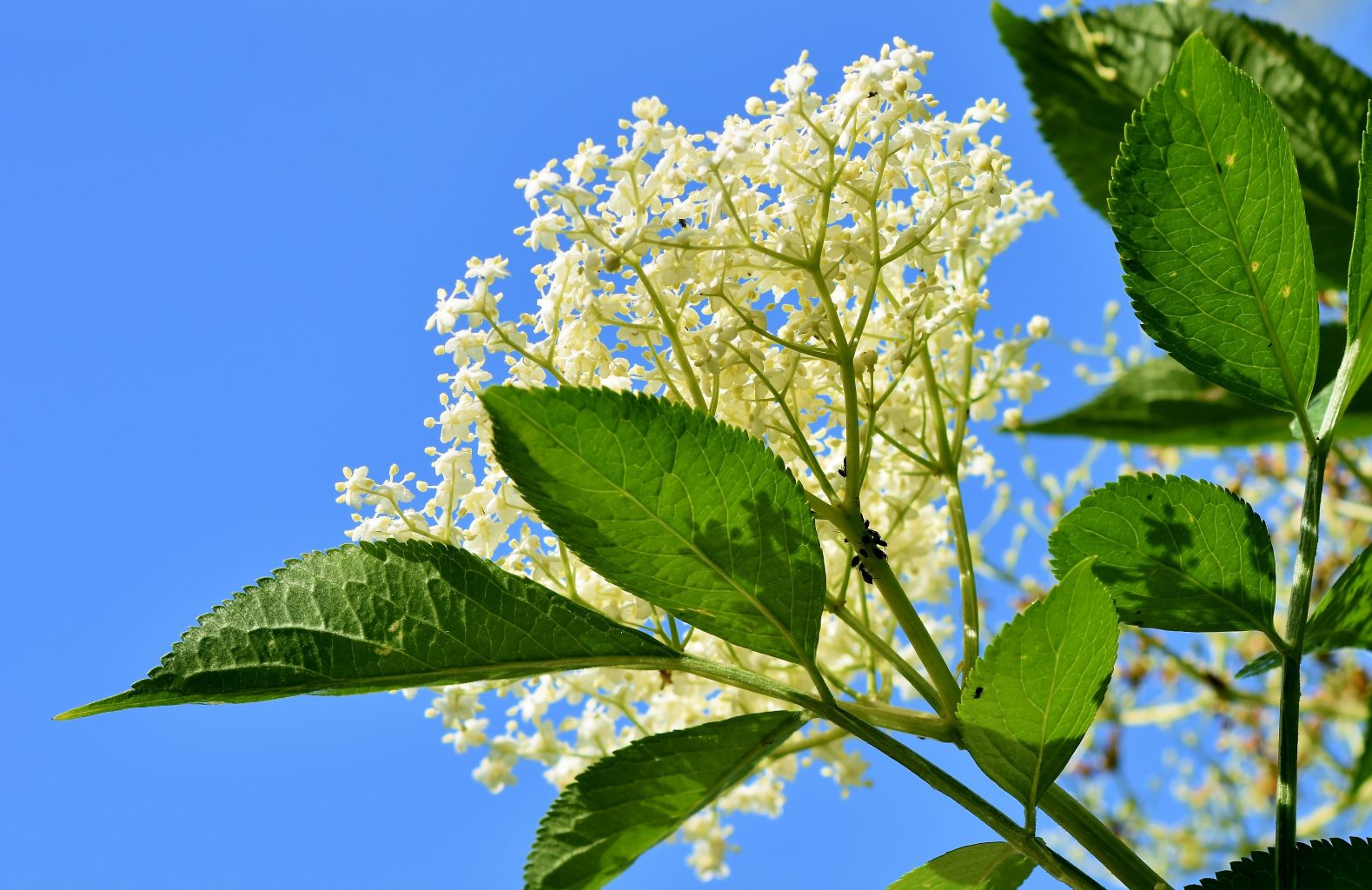
Elderberry is a fascinating deciduous shrub (or small tree) native to portions of North and South America, Asia, the South Pacific and Europe. An ancient shrub with many species, elderberry gained renewed popularity over recent years due to its medicinal/ornamental properties and environmentally friendly presence.
Although there has been some confusion around the classifications of the Sambucus species, it is generally reported that Red Elderberry (Sambucus racemosa) and Blue Elderberry (Sambucus caerulea) are native to North America and part of a small family called Adoxaceae. Black Elderberry (Sambucus canadensis) is native to a large area of North America east of the Rocky Mountains.
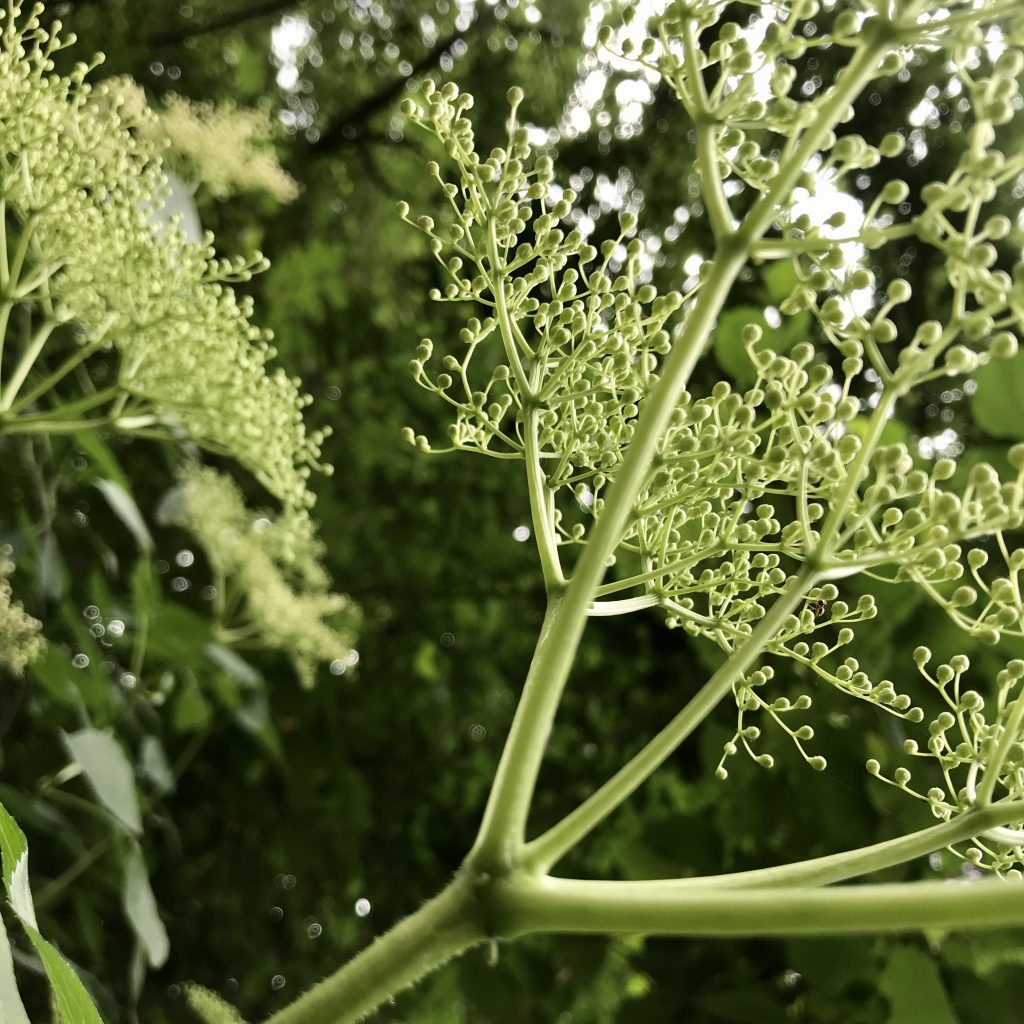
The common name, “Elderberry”, is believed to originate from the Anglo-Saxon word aeld, which translates to kindle or fire. It is said that the hollow stems of the elderberry were used as bellows to direct blown air into the middle of the fire or because the stems were used as kindling. Sambucus is a Latin word which came from the ancient Greeks who, in turn, got it from the Aramaic. Its meaning is “musical pipe”. A musical wind instrument called a sambuca or sambuke was said to have been fashioned from the stems of certain elderberry species.
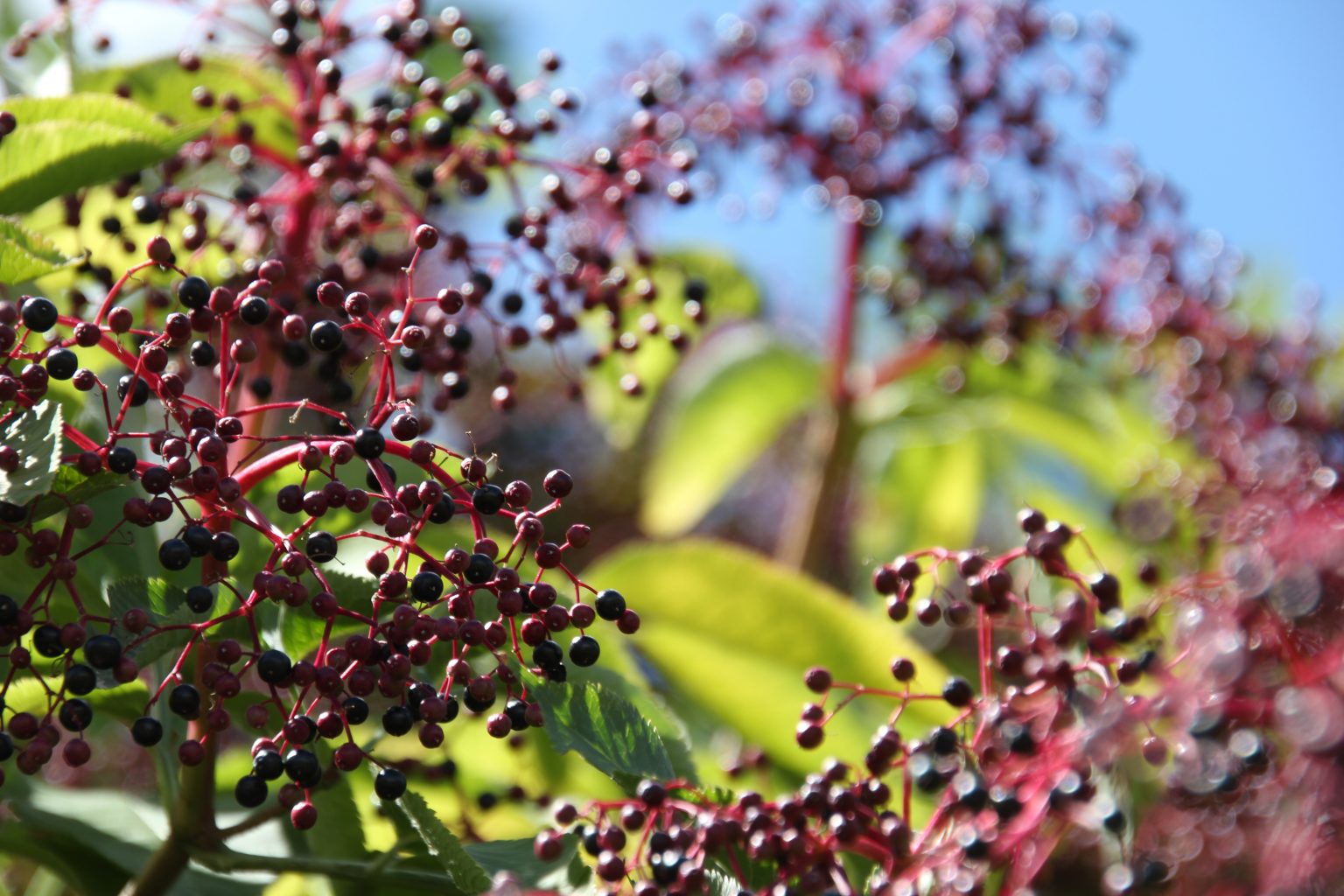
Archaeologists discovered elderberry seeds linked to human usage as early as the Stone and Bronze Ages. They posit the fruits, branches and bark were used at those times. Many philosophers and healers of Ancient Greece made reference to elderberry, some describing it as a “mysterious healing plant”. Hippocrates, the famous ancient Greek physician known as the “Father of Medicine” (460-370 BC), called elderberry his “medicine chest”.
Scandinavian folklore has stories of the “Elder Mother”, the goddess of life, death and vegetation. She is said to inhabit the Elderberry and had the power to protect or harm. This is why the ancient people always accorded this shrub great respect and asked the Elder Mother for permission before appropriating any part of the tree. They used the branches for protection, hanging them within their homes.
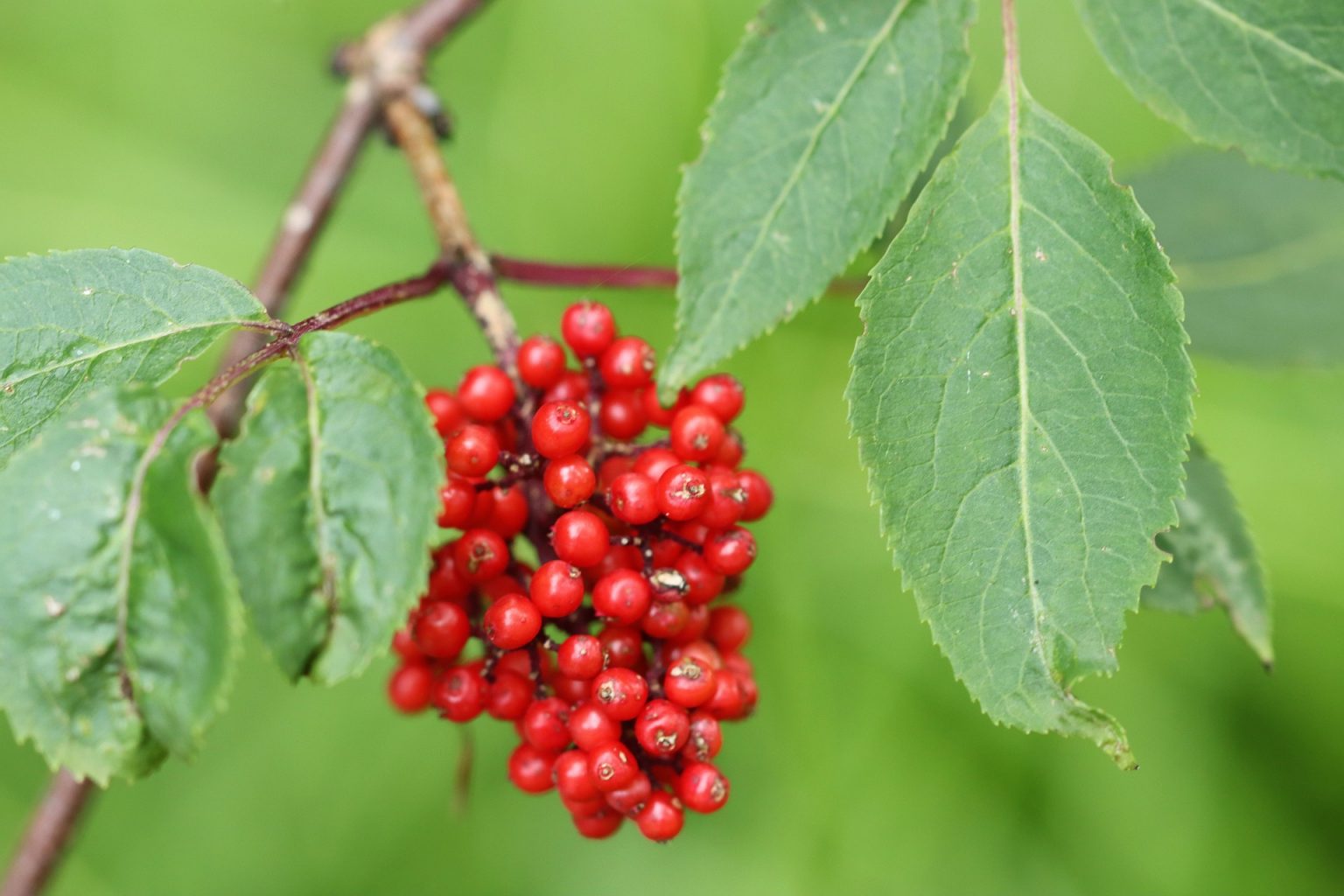
If you see wild Red Elderberry shrubs in the winter, and if you recognize them, you may judge them as less than robust as their bare branches appear weak and underwhelming. And yet, when the fruit appears, ripening all at the same time, the elderberry becomes exotic in appearance with the beautiful geometry of its leaves and scarlet fruit.
Red elderberry fruit feeds countless birds, squirrels, mice, raccoons, bears, deer and moose and provides cover and nesting for many species. It is also a place many insects choose to winter and deposit their eggs. The elderberry flowers provide nectar and pollen for bees, butterflies and hummingbirds. And if all that wasn’t enough, the Red Elderberry plays an important role in the forest ecosystem as a part of forest regeneration through its ability to help restore disturbed areas, thus supporting the overall resilience of forested landscapes.
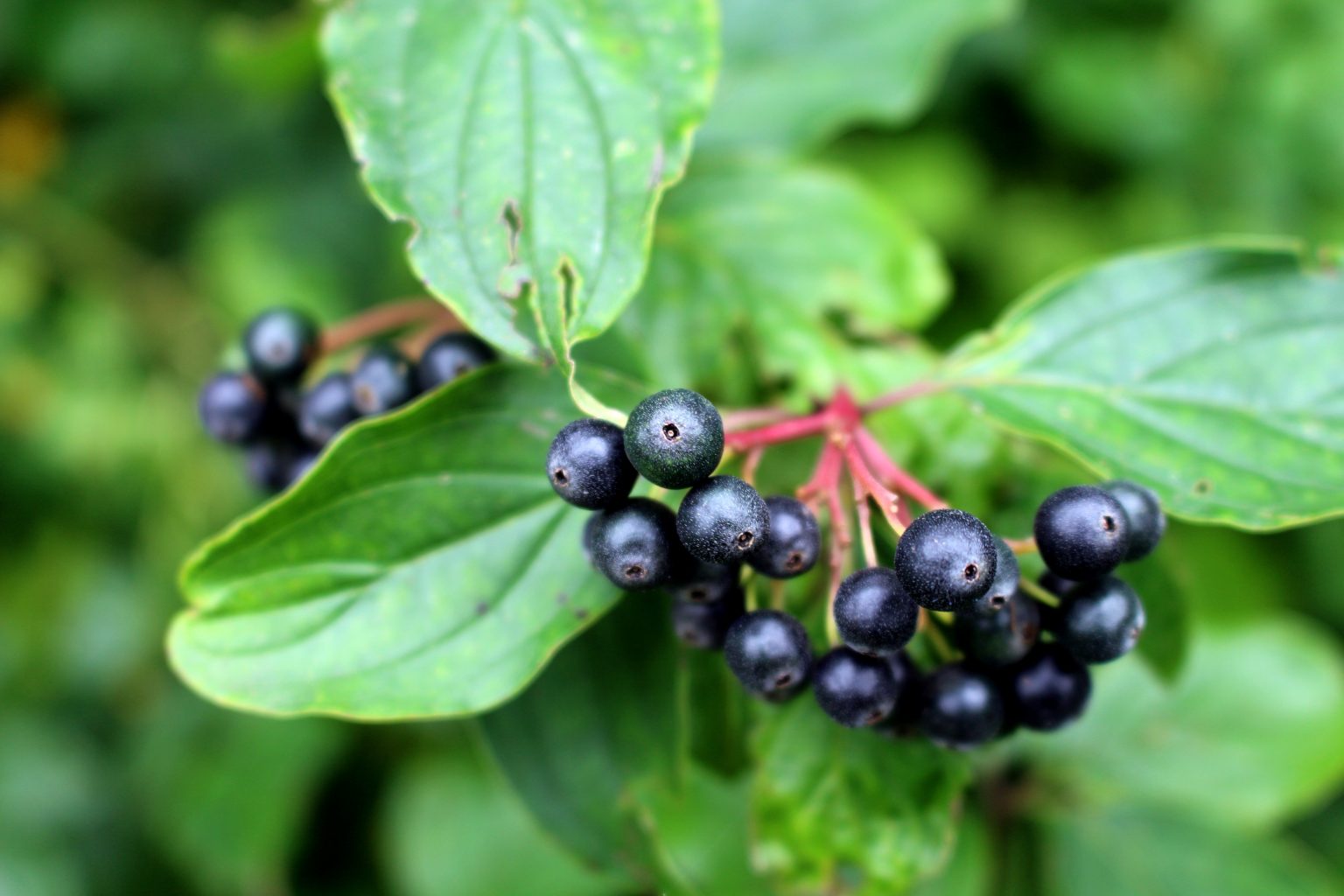
Native peoples preserved the berries and set them aside for winter by steaming them on rocks, then placing them in containers which they buried underground. Various parts of the leaves, bark or roots were used for many ailments such as fever and rheumatism. The flowers were boiled to treat cough and colds.
Modern research shows elderberries appear to assist in clearing viruses by interfering with viral replication, thus reducing the viral load. They are said to have anti-inflammatory properties and assist in supporting our immune system. The unripe fruits do contain toxins which are destroyed if they are cooked prior to digestion.
Low in sugar, the taste of elderberries has been described as an “earthier and tangier version of blueberries”. They are delicious in many recipes including syrups, cocktails, desserts, vinegar, jams, jellies, champagne and wine-making. In some traditions, it was the custom for a bride and groom to eat elderberry cake or drink elderberry wine to ensure a happy and fruitful marriage. The list of ways elderberries can be prepared, including recipes for eating the flowers, is practically endless and worth exploring.
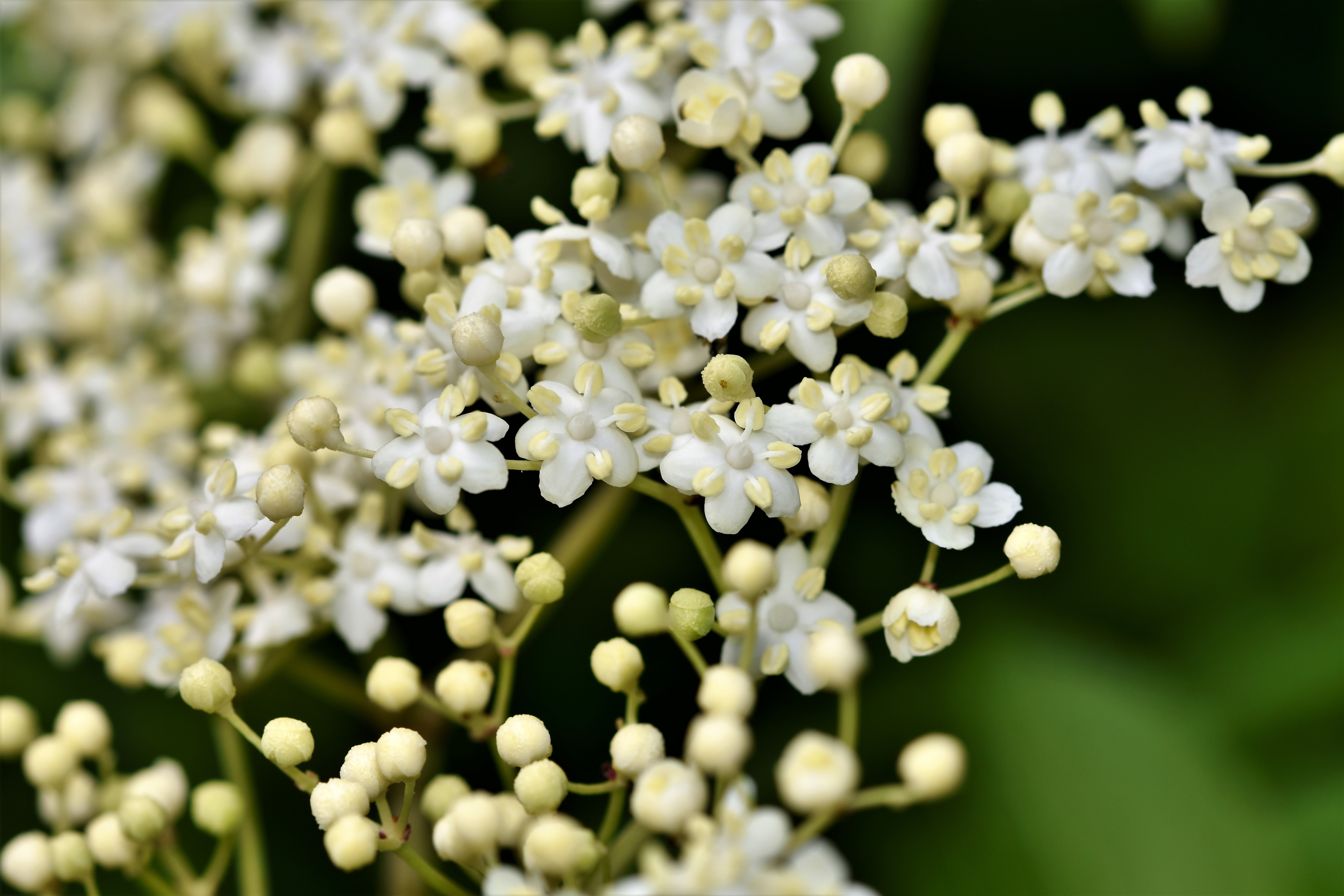
The Ogham calendar is an ancient Celtic lunar calendar which designates a letter and a tree to each month. The Elder’s is the 13th month and the letter R for Ruis. In some ancient mythology the Elderberry tree is linked with the winter solstice, thus representing maturation, endings and the awareness that comes from gaining experience. The counsel of Ruis is to enjoy life in the present moment, take hold of the spark of inspiration (awen) it offers and to let go of things which hold you back, especially disagreements with others.
The Elderberry is a tree that can withstand much because of its ability to rejuvenate easily. This symbolism suggests that when setbacks happen or a phase in life ends, to remember there is always another beginning. The main message is “All that we experience forms the foundation of who we are becoming.”
Elderberry can add charm, mystique and practicality to your life. Steeped in an ancient and widespread history, with its many roles in various cultures, it may be well worth taking some time to note and perhaps join in the deep reverence and respect they were granted throughout history.
